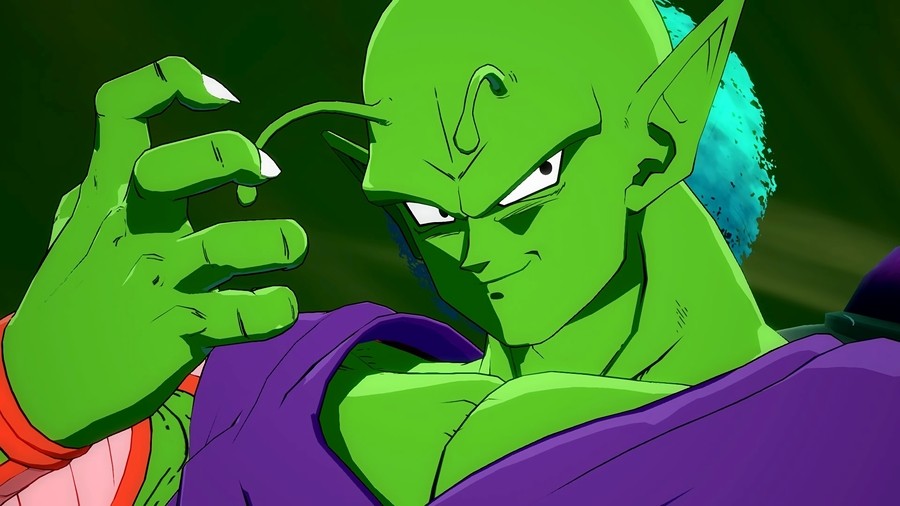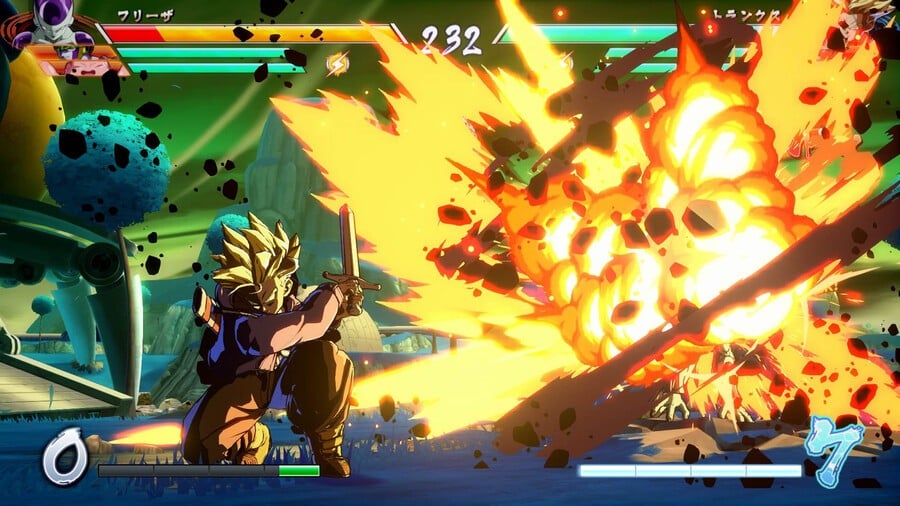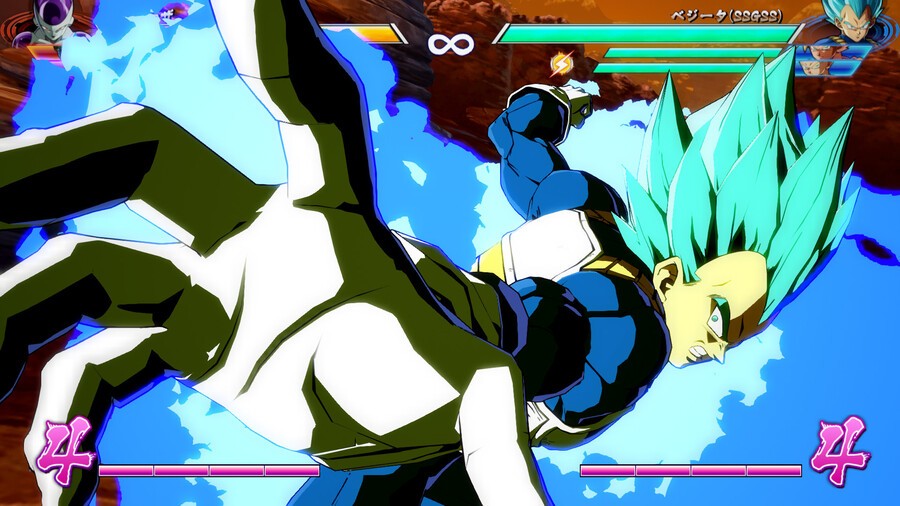
Dragon Ball FighterZ is one of the most accessible fighting games we've played in a long time, but that doesn't mean it's a shallow experience. In fact, there are a whole host of intricacies to take into consideration -- especially when you're looking to play on a competitive level -- but what sort of stuff should you know about before you start cracking skulls for the first time?
In this hopefully helpful beginner's guide, we're going to go over a number of key points that we think are worth keeping in mind when you're just starting out with FighterZ.

Some key moves are shared by all characters
Once you understand the fundamentals of Dragon Ball FighterZ, you'll be able to play any character on a basic level. Every character has access to certain universally useful moves, namely an attack that can launch enemies into the air, a low sweep, and an overhead attack.
Pressing down and circle together gives you the launching move, which is perfect for catching out opponents who are rushing at you. This move will always beat super dashes (R2) and you'll be able to pull off a full air combo once it connects. It's the perfect counter to use when your enemy is spamming their super dash in an attempt to get close.
Pressing down and triangle gives you the low sweep. This'll knock your opponent off their feet and open them up for a combo if you then hit them with a heavy attack (circle).
The idea is to mix up your low sweep with your overhead attack, which is executed with forward and triangle. The overhead attack hits enemies who are blocking while crouching, and the low sweep hits enemies who are blocking while standing. Keep your opponent guessing and you're already doing something right.

There's no shame at all in auto combos
Dragon Ball FighterZ features three different combos that automatically connect when you hit a single button. The game calls these combos "super combos". Pushing square over and over again gives you a light super combo, triangle gives you a medium super combo, and circle gives you a heavy super combo. Super combos apply to all characters in the game.
You may be thinking super combos are easy mode and you shouldn't use them if you want to play the game properly -- but that's the wrong way of looking at it. While super combos don't deal out as much damage as more complex combos that you have to properly input, they're still a really great way of getting used to the timing and pacing of FighterZ.
Look at it this way: you're better off relying on super combos to do good damage than you are trying to pull off more complicated moves and failing.
Super combos can even be helpful at higher levels. You can attach them to the end of you own combos, for example, or you can use them to finish enemies off since you know they won't miss.

Don't forget to jump
When you're in the heat of combat, it can be easy to forget about the fact that you've got access to a bunch of aerial manoeuvres. While jumping around isn't as important as it is in something like Street Fighter, it's still worth remembering that a quick jump or mid-air dash can keep you out of harm's way.
Many projectile attacks in FighterZ travel in a straight line from one side of the screen to the other. As such, you may be surprised by how many of these attacks you can avoid completely by executing a simple jump. It's also worth mentioning that you can block while in the air, too, so it's not like being airborne leaves you defenceless.
So should you try and mix a few jumps into your standard movement? There's no concrete answer to that question, but it can be a good idea to hop every now and then purely because it can make you harder to hit.

Don't let your ki go to waste
Your ki -- the energy bar at the bottom of the screen -- is one of your most important tools. Ki allows you to use super attacks, meteor attacks, enhanced special attacks, and vanishes. Fortunately, keeping track of your ki is easy. You can have up to seven bars of it, and everything but meteor attacks -- your most powerful techniques -- takes up just one bar.
Saving up your ki so that you can dish out big damage at the right time is a reasonable idea, but in practice, it's very easy to let your ki go to waste. If you're sitting there with seven whole bars at the end of a fight, you've probably been too careful -- it's best to just let loose when you have the resources to do so.
Comboing into super attacks and meteor attacks is actually pretty easy once you've got the timing down. If you've got the ki, don't let it go to waste and use it up in order to maximise your damage output. During the early stages of a fight, it may seem like you're not collecting much ki, but as things wear on, you'll really start racking it up as you continue to give and take damage.

Vanish attacks aren't for spamming
Vanish attacks are activated by pressing triangle and circle together. They automatically put you behind your opponent, making them a very useful tool -- but you definitely shouldn't use them all the time.
For one, vanish attacks take up one bar of ki -- use them frequently and you'll run yourself out of ki far too quickly. What's more, vanish attacks do very little damage to your opponent, and you can't combo off them unless you're doing very, very specific combos.
So when should you use a vanish attack? Well, as alluded, they really do come in handy during certain situations. For example, if you're being harassed in a corner by your opponent, a vanishing attack can get you out of there and out of danger. Activating a vanishing attack can also be a good idea when you know a super attack is coming, as it'll immediately get you out of harm's way.
Last but not least, vanish attacks can be added to the end of combos to get that extra bit of damage. Oh, and if your opponent is down to their final character and just one more hit will finish them off? They may not see a vanish attack coming...

Switching characters is super important
You've got three characters -- make sure to use them!
Switching between characters at the right time is an incredibly important part of Dragon Ball FighterZ. Switching is key for a number of reasons, whether you're playing offensively or defensively. You can switch characters in to extend combos, help out with super attacks, or to simply make sure that one of your team members isn't knocked out.
When you switch a character out, the blue part of their health bar will start to recover. This means that you should always think about swapping characters in order to maximise your chances of survival. Play it right, and your characters can get significant chunks of their health back when they're not engaged in direct combat. This can give you a huge advantage over an opponent who only switches their characters when they're on very low health.
However, you need to be careful not to switch at the wrong moment. If your opponent knows you're about to switch, they can quite easily catch the next character off guard, as they'll be vulnerable upon entering the screen. As such, it's best to make use of the more specialised switching situations that the game explains during its tutorial mode.
One of the best ways to switch in a character is to pull off a super attack and either hit L1 or L2 (depending on which character you want to swap to). Doing this will bring your chosen character in to unleash their own super attack, and once it's over, they'll be your active fighter.

Comments 1
@ShogunRok could you not make this into a video it would have been easier digest
Show Comments
Leave A Comment
Hold on there, you need to login to post a comment...